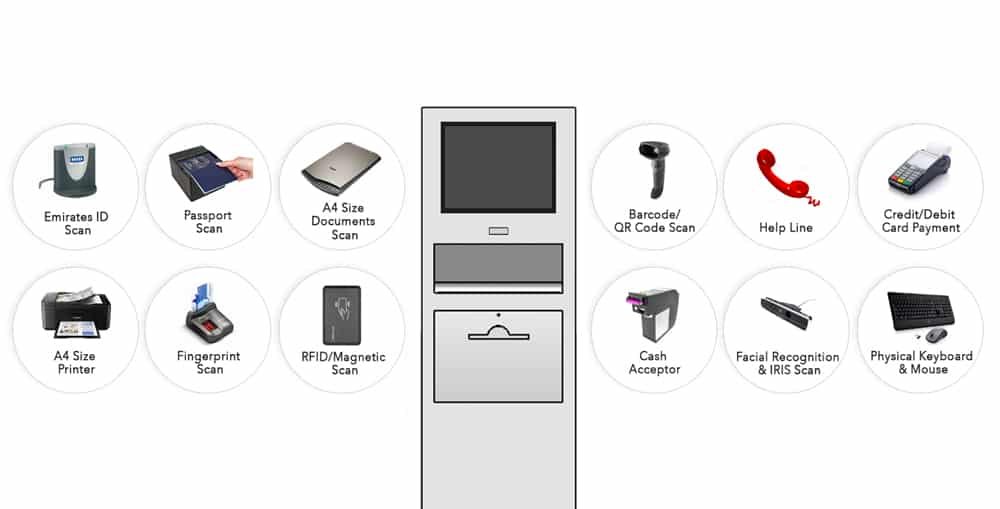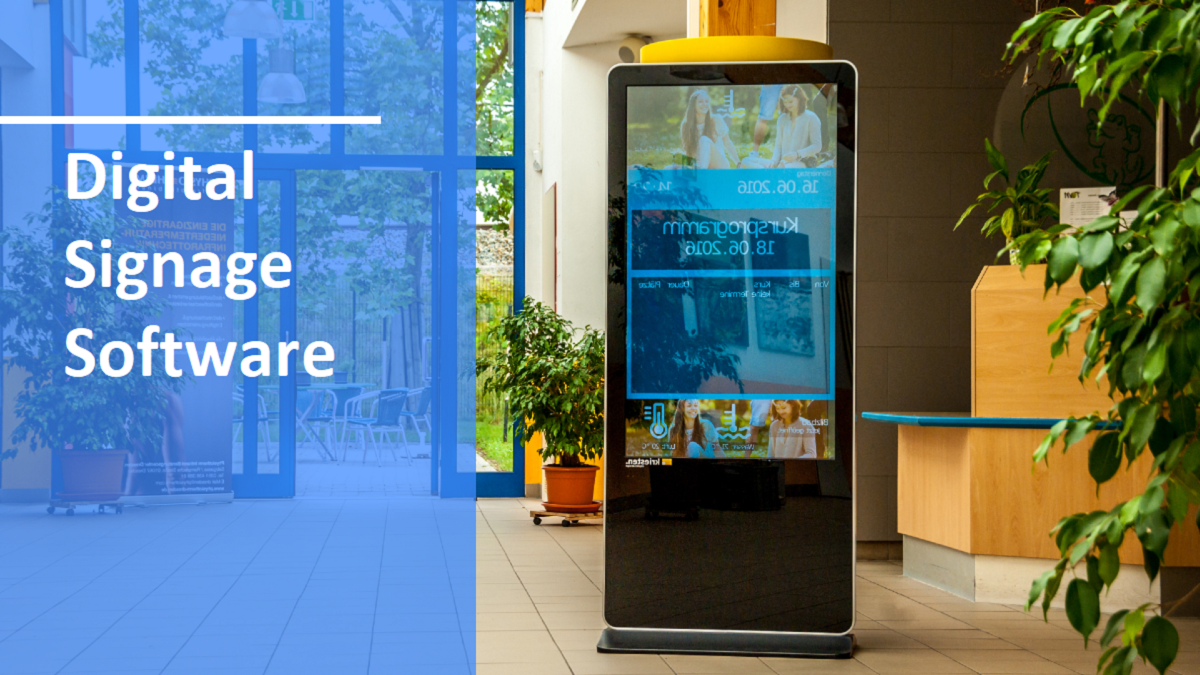
The Ultimate Guide to Choosing the Right Self-Service Kiosk Hardware
The use of self-service kiosks is increasingly changing customer interactions with businesses. In today’s fast-paced world, businesses need an easy and effective way for customers to take charge of their trip, enriching their experience. Self-service kiosks—what are they and how might they help your business?
Kiosks are multipurpose and vary in size. However, closer inspection reveals considerably smaller kiosk hardware components. Many kiosks include these components.
This tutorial covers self-service kiosk hardware extensively. Read and discover!
What is a self-service kiosk?
Self-service kiosks are touchscreen computers that let users do tasks autonomously. Panel PC or display/touchscreen monitor, add-on devices, enclosure, and software are its components. Businesses can create a personalized self-service kiosk using these main components.
Self-service kiosks include grocery self-scan check-outs, restaurant self-ordering kiosks, workplace digital receptions, government queue systems, and healthcare provider visitor registration kiosks. Endless possibilities!
Overview of Kiosk Hardware Components

One should first learn kiosk hardware components. Display technologies, input devices, and output devices are the main categories.
Hardware Input
Communication with kiosks is enabled by input devices. They feed kiosks data. These input devices are common:
Barcode Scanners (Keypads)
Output Devices: Card Readers
Action feedback and appropriate information are provided by output devices. Here are some kiosk output devices:
Products: Printers, Speakers
Indicators: LED Display Technologies
Most kiosk customers notice the displays first.
Traditional LED screens to high-end touchscreen monitors with complex gestures and multi-touch support are available. Major displays include:
Examples of displays include LCDs, touchscreens, and LEDs.
Functions of Kiosk Hardware Components
KIOSK hardware includes a CPU for job management, a touchscreen for user input and interaction, and peripherals including payment systems, printers, and scanners for transactions and data entry. A sturdy casing covers the kiosk’s internal components, while communication technology lets it talk to other systems.
Key elements
Processor (CPU): The kiosk’s “brain” that runs software, processes user inputs, and controls operations.
Users can select options and enter information using the kiosk’s touchscreen display.
Enclosure: A steel or aluminum housing that protects inside components from damage, tampering, and weather.
Input/output devices
Card reader/payment terminal: Accepts credit, debit, NFC, and other payments.
Barcode scanner: Scans tickets, IDs, and checkout items using barcodes or QR codes.
Printer: Prints receipts, tickets, and confirmations.
Camera: For security, user verification, and document and ID scanning.
Speakers: Give users audio feedback, instruction, or accessibility.
Power and connectivity
Connection hardware: Allows data retrieval and software updates via Wi-Fi, Ethernet, or cellular networks.
Power over Ethernet (PoE): Simplifies installation by providing power and network access in one wire.
Overview and functions of Kiosk Software

Digital kiosk software restricts access to authorized apps to make conventional hardware secure self-service terminals. All user interactions are interfaced via kiosk software.
Kiosk Software Examples
A good software has these features:
1. Windows IoT, Android, and Linux-based operating systems were chosen based on kiosk customisation for functionalities.
2. Application Software: Kiosk users easily use this unique app. As the front-end and data-capture device, it connects with other systems like POS and stock management.
3. Remote Control and Management Tools: Kiosk control requires supervision but can be done remotely to ensure smooth communication.
These tools let organizations alter content, data, and kiosk functionality.
How Digital Kiosk Hardware and Software Work Together
Great user experience requires hardware and software compatibility in digital kiosks.
1. Flexible Software and Strong Hardware
Software and hardware are essential for kiosk implementation.
Hardware and software must be strong, secure, and reliable and can be updated to improve user experience.
Survivable hardware is needed for kiosks in specified situations.
Customer satisfaction, service offerings, and user behavior are controlled by the program.
2. Enhancing Collaboration
Digital kiosk hardware and software define kiosk features.
A software architecture requires constructive touchscreen devices for implementation.
Card readers, printers, scanners, and other hardware peripherals require data from the program.
If it exists, competent software can fix hardware issues.
3. Improving Usability and Operations
Users expect kiosks with good user interfaces. Nice touchscreen, good printing, and good control software.
Kiosks have user-friendly software that anticipates user needs to reduce waiting time and other delays.
Factors to Consider When Choosing a Kiosk Device
There are several crucial factors to take into account while choosing the correct hardware:
Make sure digital content is readable, aesthetically pleasing, and clear by considering screen size and resolution. You could choose a larger display for easier reading or a higher-resolution screen for sharper photos and videos, depending on your available space and the kind of content you’re showing.
TouchResponsiveness: An intuitive experience that enables users to navigate content with ease is created by a responsive, fluid touchscreen. Seek out gadgets with robust touch capabilities to minimize lag or friction when using them.
Mounting options and durability: Equipment that can withstand heavy traffic is essential. Whether the gadget is freestanding, wall mounted, or countertop mounted, look for mounting choices that fit your setting.
Operating System and Device Model: The newest technology is guaranteed to be installed on your kiosk hardware if you select a device from a recent model year. Better touch responsiveness, increased durability, and more powerful computing capability are all features of modern gadgets. They also support the most recent operating systems, providing improved features, security, and interoperability with applications for interactive kiosks.
FAQ
What are the components of kiosk hardware?
Includes all types of components such as printers, card readers, scanners, bill acceptors, bill recyclers, touchscreens and many more.
What is the functionality of kiosk?
Self-service kiosks are interactive tablets or touchscreen computers that let users access services or information without speaking to a human. By installing self-service kiosks, a company can cut expenses while increasing operational speed and efficiency.
Is a kiosk hardware or software?
An interactive kiosk is a computer terminal with specialized hardware and software that offers applications and information for commerce, education, entertainment, and communication. AT&T, which enabled bill payment for phone subscribers, had the biggest network of bill pay kiosks by 2010.












One thought on “The Ultimate Guide to Choosing the Right Self-Service Kiosk Hardware”